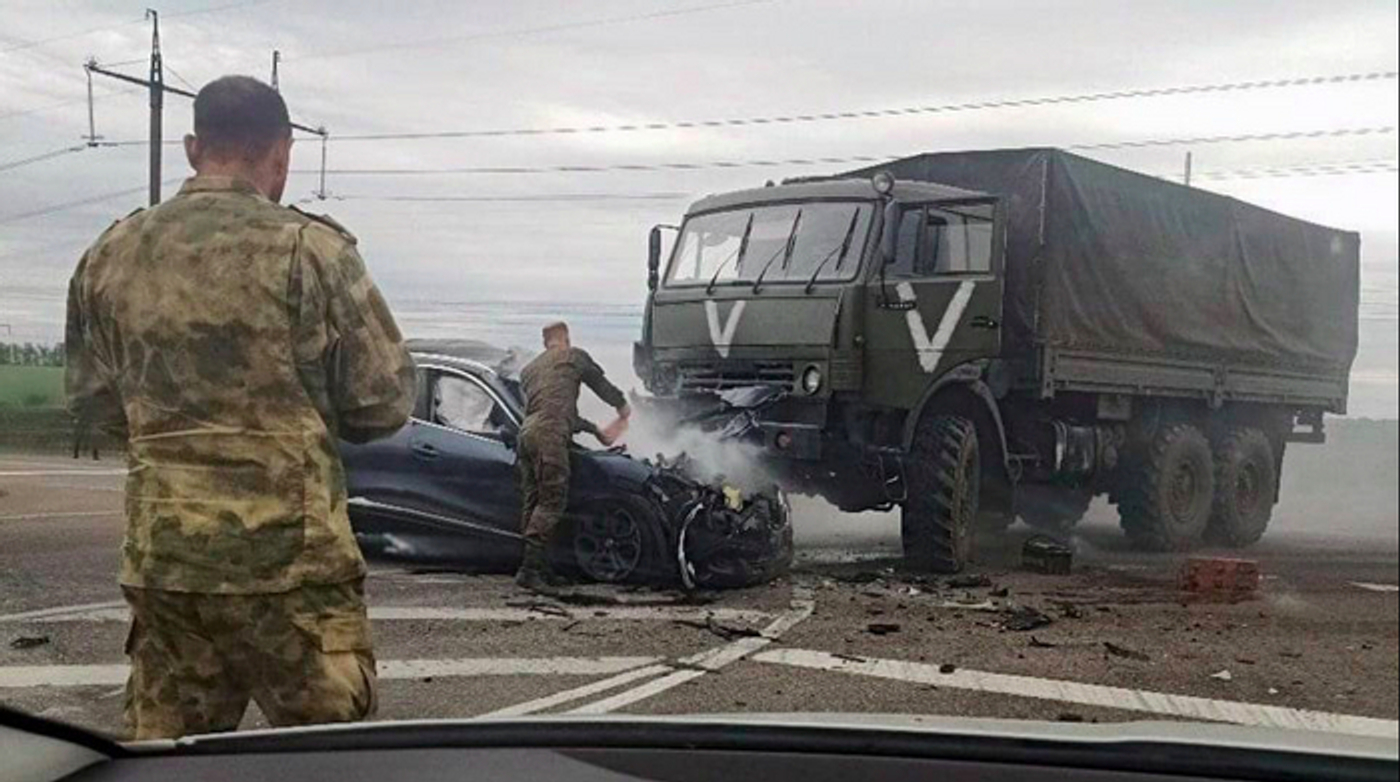

In late October, the Kursk Garrison Military Court sentenced 31-year-old serviceman Ramazan Gadzhimuradov to nine years in a general-security penal colony and a three-year driving ban over a car accident in central Belgorod. In February 2025, Gadzhimuradov, who was intoxicated and had no driver’s license, crashed at high speed into an ambulance. Two paramedics — Marina Parovyshnik and Olga Liubimova — were killed. Since Russia’s full-scale invasion of Ukraine began, the number of fatal traffic accidents involving soldiers and military vehicles has been steadily increasing in frontline regions. As The Insider and other independent media estimate based on open-source data, 23 people were killed in such crashes between February and October 2025. Their families, along with the survivors of these accidents, have been unsuccessfully trying to obtain compensation from the military. Reliable data on the exact number of such incidents is unavailable, but families of the deceased sometimes reach informal agreements with security agencies, even as the responsible servicemen often avoid accountability.
Content
“I don’t hold a grudge — but I want at least something”
Secret car accidents
“I will seek the most severe punishment for my wife's killer”
All that remained of the car was a heap of metal
The commission will look into it — if it ever appears
For more than a year, 40-year-old paramedic Maxim Barkalov, from the Belgorod Region’s village of Solokhi, has been trying to have charges brought against the soldiers who ran over his car with a howitzer. Maxim miraculously survived the crash but was left disabled.
“I don’t hold a grudge — but I want at least something”
In 2022, when the village of Solokhi came under shelling for the first time, Barkalov began volunteering and joined the local territorial defense unit. He started delivering humanitarian aid to soldiers and held workshops on tactical medicine. On the evening of June 4, 2024, the paramedic was driving home in his Niva after one of these sessions when a Msta-S self-propelled howitzer suddenly emerged from a tree line near the village of Orlovka and ran over the jeep-like vehicle.
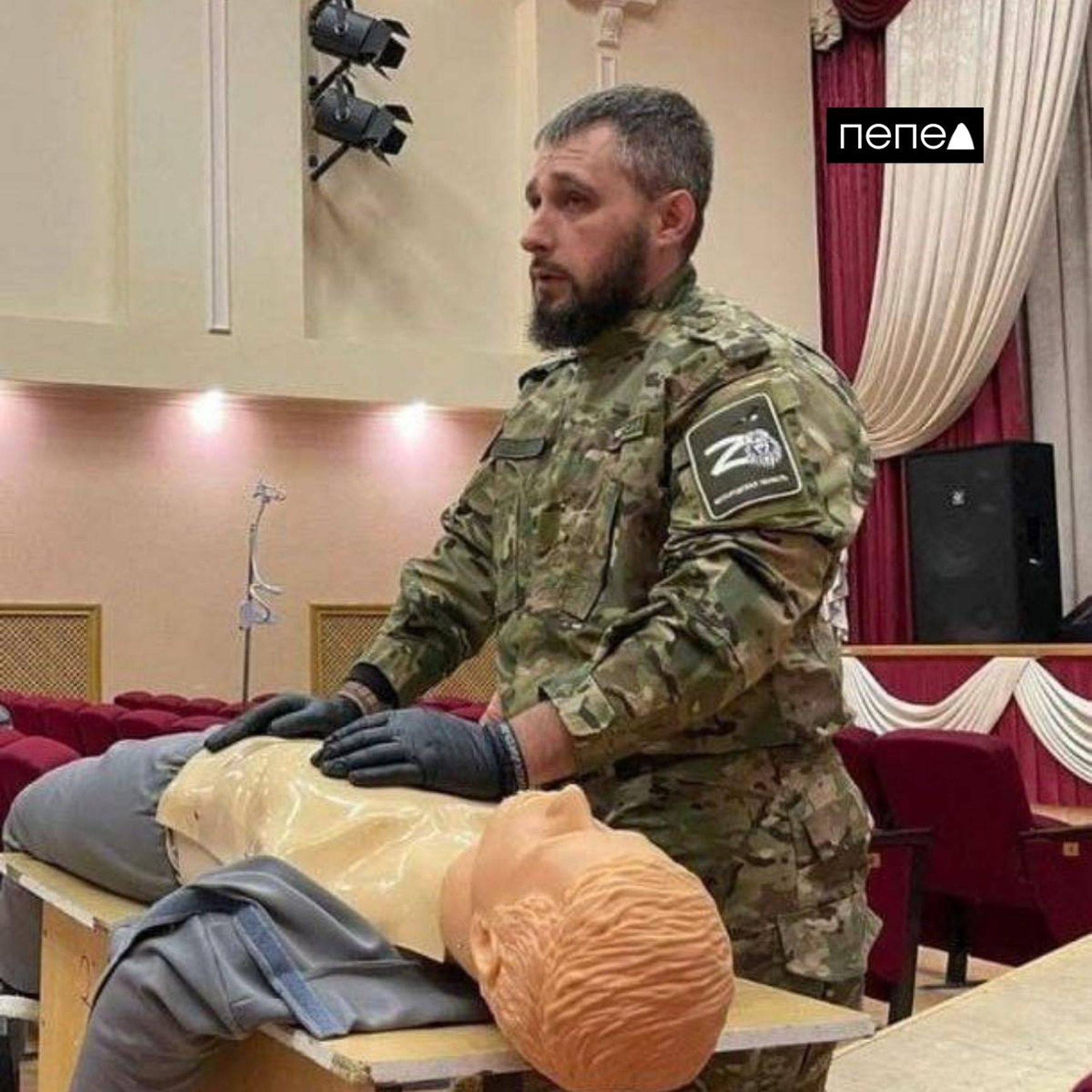
Paramedic Maxim Barkalov
Pepel Telegram channel
Barkalov remembers only a “flash” (which he mistook for a drone strike) before immediately losing consciousness. When he was delivered to an intensive care unit, he was “broken all over.” He believes he was saved by his bulletproof vest, along with the fellow villagers who happened to be passing by and recognized his car.
Later, locals told the paramedic what had happened next. The soldiers who rammed his car fled the scene but later returned to drag the crushed vehicle off the road and into a field. According to Barkalov, military officials and FSB officers soon arrived at the site. For more than an hour, they prevented anyone who wanted to help from approaching the volunteer’s car.
However, as the soldiers attempted to open a bottle of vodka found in the car in an effort to make it look as if its driver had been drunk, an acquaintance of Barkalov’s began filming the scene on his phone. Eventually, the soldiers threw the bottle into the field and conceded to let people move in for a closer look.
The soldiers tried to make it look as if the driver had been drunk by opening a bottle of vodka they had found inside the car
Witnesses to the incident claim it was the soldiers driving the howitzer who appeared intoxicated that evening. According to locals, traffic police arrived at the crash site only after Barkalov had already been taken away by ambulance. He sustained multiple fractures — to several ribs, his left shoulder, and his left femur — and his ankle joint was partially torn apart. The volunteer spent more than two months in the hospital. He still walks on crutches and, in his own words, moves “with difficulty, more rolling than walking.”
According to Barkalov, the traffic police drew up the accident report without his participation. He tried to obtain a copy from the traffic department but was told that the document had been “seized” by the Military Traffic Police (VAI). When he contacted the VAI, officials there told him no traffic accident had been recorded in the region on that day.
The paramedic wrote to the Regional Security Department and the governor’s office. At first, officials replied that his case had been “forwarded for review” to the Ministry of Internal Affairs, the Military Traffic Police, and the Ministry of Defense — but later they stopped answering his calls altogether. Maxim Barkalov also appealed to the military prosecutor’s office, with similar success. “So it turns out the military can run me over and cover it up. But if I had run over a soldier, I’d be in prison,” he said.
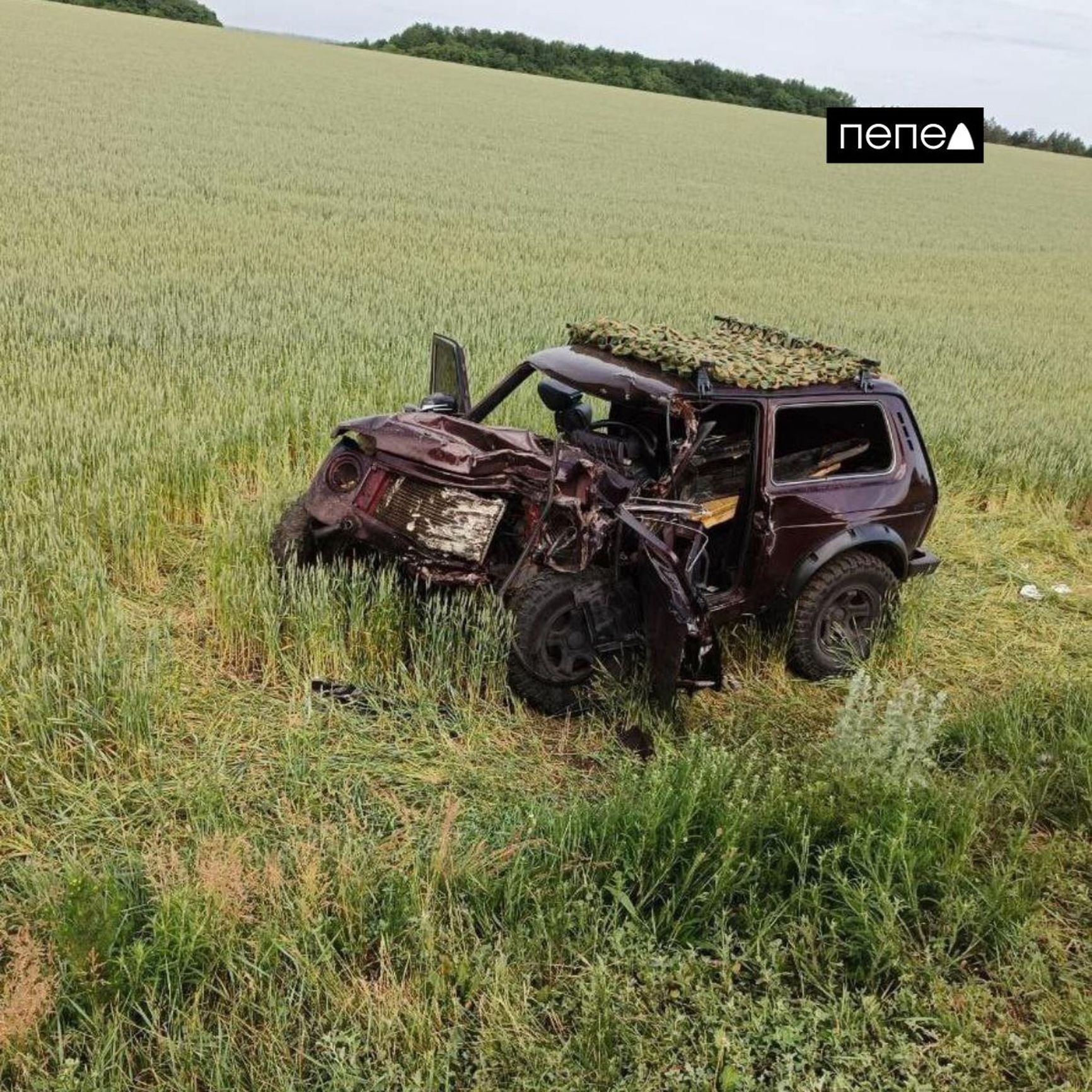
The paramedic Maxim Barkalov’s crushed Niva
Pepel Telegram channel
Barkalov made several attempts to get through to Belgorod Governor Vyacheslav Gladkov. He called the governor’s hotline and even received a promise of a personal meeting. But months have passed, and no one has gotten back to the paramedic.
It was only when he began posting about his situation on social media that he was finally offered an appointment with Gladkov. However, the meeting ended up being canceled, as the governor had to deal with an escalating “situation in Krasnaya Yaruga.” Instead, Barkalov was “handed off to the district head,” Tatyana Kruglyakova, who merely told him, “You had a run-in with the military — deal with them,” and advised him to “learn how to press the right buttons.” The paramedic left empty-handed: “I just waved my medals around like an idiot and drove off.”
Barkalov also wrote to Vladimir Putin, but the presidential administration forwarded his letter to the Main Military Prosecutor’s Office. “And from there, to the Moscow Military Prosecutor’s Office, and that was it,” Barkalov says.
Still, on August 1, military officials came to Barkalov’s home to reach an agreement. “They apologized for how long everything was dragging on and asked about my health. They offered to settle the matter out of court. I told them, ‘Guys, I don’t need anything from you. Just make up for the car you crushed, and we’ll call it even.’ At first, I asked for a million rubles [$12,600], but they said the amount was too high — that they ‘couldn’t raise it quickly,’” the paramedic recalls. “Then I said 500,000 rubles for the wrecked car and 250,000 for treatment. In the end, they said, ‘All right, we’ll report to the command and let you know tomorrow.’ And that was the last I heard from them. It was as though they'd run me over a second time. I’m not asking for moral damages — just the actual material damage. We all understand the circumstances and what those guys are going through. I don’t hold a grudge, but I want at least something.”
Barkalov has now returned to work as a paramedic at his local medical station and continues delivering humanitarian aid to military positions. In September, he had to confront the same soldiers who ran over him with the howitzer. “I asked them why they left me and then came back to drag the car into the field. I got no answer. They started dodging, saying no one abandoned me. I said, ‘According to the witnesses, it’s clear you didn’t let anyone near me. No one could help, and you wanted to cover up the evidence.’ Then they started claiming that I had supposedly been fleeing and that I was the one to blame.”
All Barkalov can do now, he says, is “hope to God and believe in justice.” He expects that “conscience will prevail, the guilty will come forward and at least compensate me something.” Meanwhile, the paramedic must prepare for another surgery: “They need to reconstruct my pelvis, which has come apart.”
Secret car accidents
Journalists from several Belgorod publications told The Insider that obtaining official data about traffic accidents involving military personnel is extremely difficult. Most such reports are “classified,” with cases taken over by the Military Traffic Police. The regional traffic department does not even include them in its general statistics. Moreover, media outlets are afraid to publish the fact that soldiers were responsible for fatal crashes, fearing prosecution under laws against “discrediting the army.”
Media outlets and relatives of the deceased fear publicizing information about traffic accidents for fear they could be prosecuted for “discrediting the army”
For the same reasons, local journalists say, victims and their families often do not want to publicize what happened — even if it was a major accident that claimed several lives, including those of children. This was the case in a fatal crash in Valuysky District on May 29, 2022, when a military KAMAZ truck collided with a Renault. The truck was driven by a 25-year-old serviceman who was turning left and failed to yield to the passenger car.
The accident killed the 42-year-old driver of the Renault and his 15-year-old daughter. The other passenger was hospitalized with injuries. The family chose not to publicize the case, and media coverage was limited to a brief report about the crash. A family member told The Insider that their relatives “didn’t want to reopen old wounds; the soldiers were punished, and the families of the deceased received compensation.”
Another high-profile fatal accident occurred on May 29, 2024, in the Shebekinsky District. Local taxi driver Alexei Amelchenko was killed in an accident that was the fault of a military Ural truck driver. Amelchenko's relatives told The Insider that the family received “around one million rubles and help with paying off loans.” However, not all relatives of the deceased can be silenced with a payout.
“I will seek the most severe punishment for my wife's killer”
Dmitry Karpachev lost his wife, emergency medic Olga Liubimova, in a crash involving a drunk soldier. He says he “won’t leave the case like this” and will push for the maximum sentence for the “killer.”
The accident, caused by military personnel on Feb. 7, 2025, became one of the most high-profile in Belgorod since the start of the war. At around 2 a.m., a BMW X7 SUV, traveling at over 150 kilometers per hour, ran a red light and collided with an ambulance van. The impact threw the ambulance into the wall of a residential building and against a power line pole.
Two paramedics were killed in the crash: 45-year-old Marina Parovyshnik and 38-year-old Olga Liubimova. Marina died at the scene, while Olga passed away in the hospital. Marina left behind two sons, and Olga had a daughter. The ambulance driver survived.
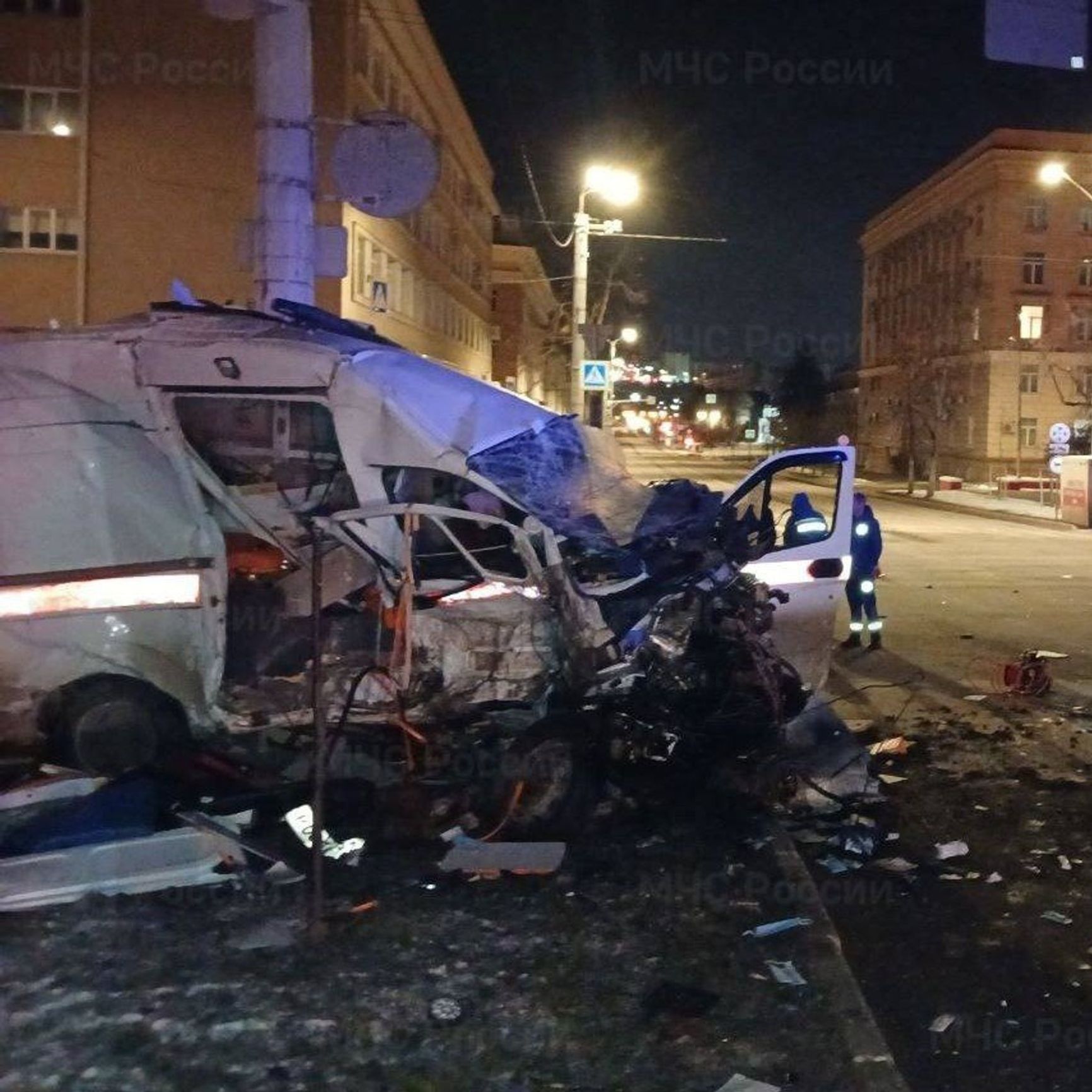
The ambulance after the fatal crash involving military personnel
Pepel Telegram channel
Journalists later discovered that the BMW had been driven by 28-year-old marine Ramazan Gadzhimuradov, a participant in the war against Ukraine. He was driving without a license and was drunk at the time of the crash. One of the other two soldiers in the car was Murad Musaev, local media reported. After being discharged from the hospital, Musaev returned to the frontline.
At first, Gadzhimuradov’s relatives denied that he could have been drinking, citing his religious beliefs. But in July, Governor Gladkov confirmed that the soldier had been heavily intoxicated at the time of the crash. “You cannot call the person who killed them a traitor. But he is a criminal. In a state of extreme alcohol intoxication, he rammed into an ambulance that, at that very moment, was saving someone’s life,” Gladkov said in an interview with IA Regnum editor-in-chief Marina Akhmedova.
Belgorod paramedics Marina Parovyshnik and Olga Liubimova, killed in a traffic accident caused by military personnel
Fonar website
Immediately after the crash, Gadzhimuradov was admitted for treatment at Moscow’s Burdenko Military Hospital. After being discharged, he was detained and sent to Belgorod’s Pretrial Detention Center No. 1.
In the months following the crash, journalists from the Belgorod outlet Fonar sent five inquiries to the Investigative Committee about the progress of the investigation. It was only at the end of August that the press service of the Main Military Investigative Directorate confirmed that the investigation had been completed and the case files had been sent to the prosecutor with an indictment. On Oct. 2, the Kursk Garrison Court began hearing the case.
According to Dmitry Karpachev, husband of the deceased Liubimova, at the end of April someone approached him looking to “reach an agreement.” Gadzhimuradov’s lawyer offered “compensation for moral damages” connected to his wife’s death. Karpachev refused the offer, partly because it could have been considered a “mitigating circumstance” for the defendant at trial. “I will demand the most severe punishment for the person who killed my wife,” he told journalists. Gadzhimuradov’s relatives also approached Olga Liubimova’s sister, offering “apologies and payment for the funeral.” They were also refused.
Witnesses to the crash said that the tank crew behaved inappropriately and even laughed in their faces
Another high-profile tragedy involving military personnel occurred in Borisovsky District on July 24, 2024, when a T-72 tank ran over a Niva jeep driven by 52-year-old agronomist Konstantin Lopatkin, from the village of Berezovka. The official cause of his death was listed as a “heart rupture,” confirmed by the forensic examination. Lopatkin’s daughter, Natalia Kovalenko, strongly disagrees. According to her, even in photographs, “you can see that my father’s skull was deformed.”
Witnesses to that accident said the tank crew behaved inappropriately, even laughing in their faces. None of them apologized to the deceased man’s family. Lopatkin’s daughter, who lives in Kazakhstan, has been trying ever since to hold the soldiers accountable, but the Ministry of Defense told her they cannot provide guidance to a foreign citizen. The Kazakh consulate, meanwhile, said it has no authority to intervene in another country’s judicial system.
The tank accident that killed agronomist Konstantin Lopatkin
Pepel Telegram channel
As Natalia Kovalenko told the independent TV channel Dozhd, she learned about her father’s death from the media. None of the local officials contacted Lopatkin’s stepdaughters either. Their mother, Elena Ponomarenko, had been killed in a drone strike earlier that year.
The person responsible for the accident that killed the agronomist is now on trial at the Kursk Garrison Military Court. One of Lopatkin’s stepdaughters, recognized as a victim, attends the hearings. Natalia Kovalenko told journalists that the girl has been subjected to pressure from the defendant’s lawyer, who threatened her before making an “appeal to her sympathy” by claiming that the defendant is “poor and unfortunate” and that he has a mother and sister waiting for him at home.
Lopatkin’s family is now demanding compensation from the Ministry of Defense for the destroyed car, along with moral damages. Initially, the soldier responsible faced up to three years in prison, but the sentence has now been reduced to 18 months. The deceased man’s relatives believe they are unlikely to see justice. “I understand that we won’t get our dad back, but I want everything to be done according to the law,” Natalia says.
All that remained of the car was a heap of metal
In the spring, Vot Tak calculated that from Feb. 20, 2022, to Apr. 4, 2025, at least 20 civilians had died and another 32 were injured in traffic accidents caused by military personnel on the roads of Belgorod Region, which borders Ukraine. As punishment for causing these accidents, culpable drivers were most often given small fines — around 2,500 rubles — or suspended sentences, even in cases of fatal crashes. As The Insider found, at least three more people have been killed in military-related accidents in the Belgorod Region since April.
Belgorod resident Ilya Yaroslavtsev lost his mother and cousin in an accident involving a military lowboy trailer on the Alekseyevka–Nikitovka highway. On the evening of March 19, 2025, his car collided with an army truck that had no identifying marks. In the dark, the trailer was invisible, and, according to Ilya, he didn’t have time to avoid it. Also in the car were 47-year-old Valentina Yaroslavtseva and 22-year-old Anna Ilminskaya. His cousin died instantly, and his mother passed away five days later in the hospital. Ilya himself was saved by the airbag, walking away with only a bruised chest and a cut eyebrow.
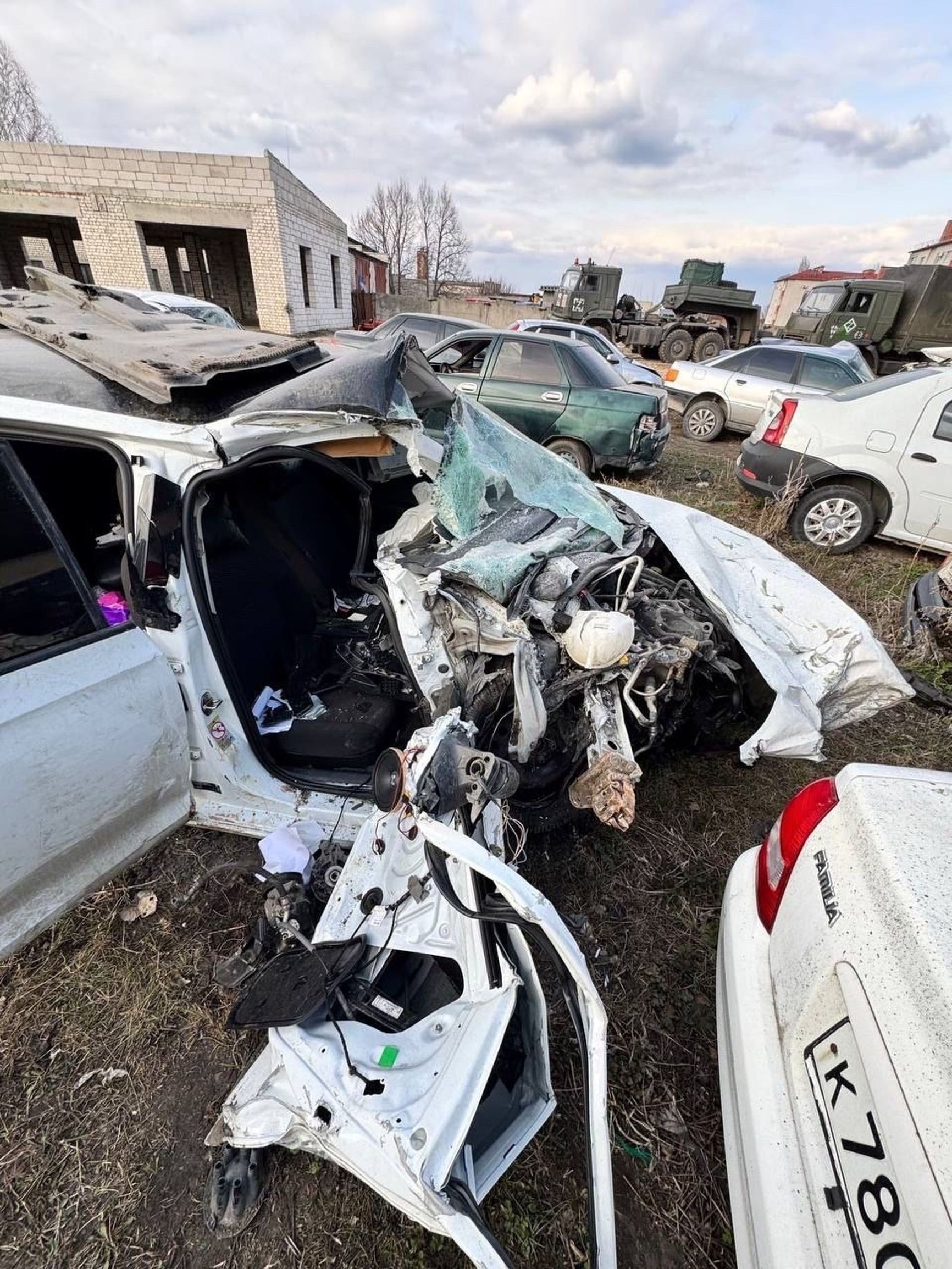
Ilya Yaroslavtsev’s car at the impound lot where it was taken after the accident
Fonar website
Witnesses said that two military trailers were preparing to turn into a parking lot and had blocked the road. According to Ilya, the Military Traffic Police found the trailer driver at fault and detained him, but he never received any information about the progress of the case. The car they were in had been rented from a taxi company and was beyond repair.
One of the most recent fatal accidents occurred on Sept. 17, 2025, on the bypass road around Belgorod. A military Ural truck collided with a Renault Logan, killing the car’s driver instantly. Initial reports claimed that the soldiers had run a red light. However, a witness later said that the truck had been moving on a flashing yellow signal, as the traffic lights in that area operate in emergency mode at night.

Fatal crash involving a military Ural truck
Pepel Telegram channel
Several lives were lost in military-related accidents in the summer of 2025. On June 26, in the village of Maysky in Belgorod District, a 54-year-old soldier driving a Moskvich passenger car hit two high school girls at a crosswalk. One of them died at the scene. She was 16. It was later revealed that the driver had alcohol in his blood and did not have a driver’s license. He had been fined four times for speeding that year alone.
On July 18, 2025, at least two military-related accidents occurred in the region. In Ivnyansky District, a military KAMAZ collided with a Lada passenger car. The truck was driven by a 58-year-old contract soldier who failed to yield. The Lada’s driver, a 23-year-old serviceman from Kursk, died at the scene. Both drivers had previously been fined multiple times for traffic violations. On the same day in Belgorod, another drunk soldier caused an accident in the parking lot of the Miratorg company office. After the crash, he attacked a traffic police officer who arrived at the scene. It was not officially reported how the incident ended, or whether the soldier was detained.
Journalists note that most accidents involving soldiers occur because military vehicle drivers violate traffic rules: they drive drunk, fail to yield, run red lights, ignore safe distances, attempt risky passes, and swerve into oncoming lanes.
Military vehicle drivers get behind the wheel drunk, fail to yield, run red lights, ignore safe distances, pass recklessly, and swerve into oncoming lanes
One of the deadliest incidents occurred in Shebekinsky District on Oct. 28, 2022, when a GAZelle van carrying ten sawmill workers collided with a military fuel truck without hazard lights parked on the roadside. Nine people were killed. The victims’ relatives filed a lawsuit against the Ministry of Defense, seeking 14 million rubles — one million per victim (three wives and eight children). However, the court decided to award only 4.8 million rubles in total. Russian families received between 550,000 and 700,000 rubles per person, while a family of refugees from Kharkiv — a mother and two children — received only 300,000 rubles for their deceased breadwinner.
The conscript soldier who left the fuel truck without hazard warnings faced no accountability; the case against him was closed. The investigation concluded that the van's high speed — around 110 kilometers per hour — was the main cause of the accident, and that the lack of warning signs was not a direct factor in the collision.
The tragedy that occurred on Apr. 27, 2024, in Chernyansky District was barely reported anywhere other than on the Pepel Telegram channel. A head-on collision with a military truck killed two men: Denis Tolmachev and Alexander Komarov. Their KAMAZ, carrying bitumen, caught fire, and the men were burned alive in the cabin. Each left behind three children. The soldiers later admitted that they had tried to “slip through” while turning, but they still faced no accountability for the accident. Pepel journalists found only a few mentions of the crash on social media. The governor and regional authorities did not comment, and the daily regional police report ignored the incident.
Local authorities, traffic police, and official regional media also remained silent about other military-related accidents. On Aug. 11, 2024, a military truck traveling at high speed collided with a passenger car in Ivnyansky District. A woman and her younger daughter were killed. The deceased woman’s older daughter, Anastasia Semenchenko, recalled that all that remained of her family’s car was “a heap of metal.” At the funeral, she could not see her mother’s face due to the severe injuries. The investigation told the family that “no one is at fault.” When Anastasia tried to draw public attention to the tragedy, many local media outlets and Telegram channels refused to publish the story, citing a ban on reporting accidents involving military vehicles.
On the night of June 1, 2024, a Russian tank ran over a passenger car in Graivoronsky District, killing the driver. Witnesses told journalists that the tank, manned by drunk soldiers, came off a field onto the road between the villages of Golovchino and Krasivo, collided with the car, and then attempted to flee the scene. The deceased, Andrei Alekseev, worked as a heavy truck driver and had recently moved with his wife and children away from the Belgorod Region to live farther from the shelling. That night, Alekseev was headed for his native village of Poroz.
The commission will look into it — if it ever appears
According to the Unified Interdepartmental Information and Statistical System, 2024 was the deadliest year on the roads of the Belgorod region since the start of the war — 178 fatalities in total. In 2022, 155 people were killed, and in 2023, 141. Another 66 have died in the first eight months of 2025. Official sources do not specify how many of these victims were killed in accidents involving the military.
Nevertheless, in August 2024, Belgorod Governor Vyacheslav Gladkov announced plans to create a government commission to address the issue of traffic accidents involving military personnel. He said he had coordinated the idea with Defense Minister Andrey Belousov. According to Gladkov’s proposal, regional officials would work with the military police to “analyze the situation weekly, respond as quickly as possible to shortcomings, and set tougher goals.” Since then, however, no new information about the commission’s activity has appeared — nothing is known about its meetings, let alone any actual results. Meanwhile, accidents involving army officers and soldiers continue to occur.